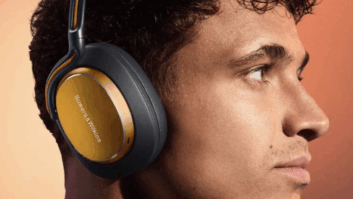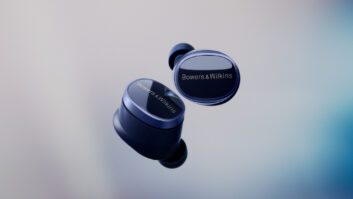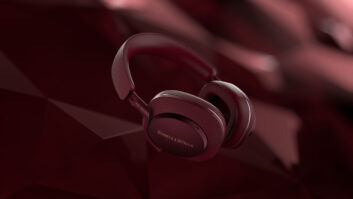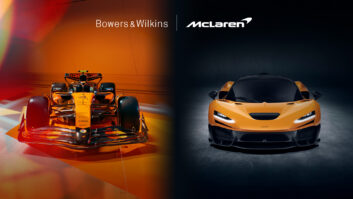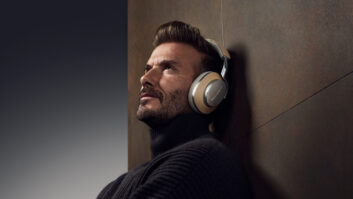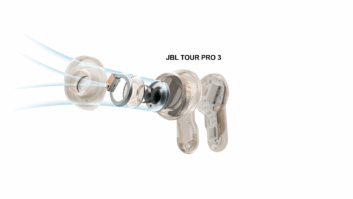Bowers & Wilkins is launching a new $30,000/pair flagship speaker to celebrate its 50th anniversary while planning for a future that aggressively embraces wireless technology and the new ways consumers access audio and video content.
To evolve with the A/V market, the high-performance speaker maker has begun developing products that incorporate wireless technology developed by Silicon Valley start-up Eva Automation, which bought Bowers & Wilkins in May. Eva was founded in 2014 to develop high-quality multiroom-A/V products that would be easy to use and set up and could be controlled from a single integrated interface. Eva’s three co-founders include Gideon Yu, a former Facebook and YouTube executive. Many of Eva’s roughly 40 employees are former Apple employees.
The first Bowers & Wilkins products incorporating Eva technology will be available in 2017, though they won’t be ready to show at CES 2017, Doug Henderson, president of Bowers & Wilkins Group North America, said. Although the products will be multiroom-audio products, global CEO Joe Atkins said Eva’s technology could be applied to video as well as to wireless home control. The technology could also be used to create wireless surround-sound systems, he added.
The company must embrace wireless and the new ways that people access audio and video content, including phone- and computer-stored content and streaming services, Atkins said, but “we were struggling” before Eva approached the company. The challenge was “finding the right technology partner” who could deliver an experience “commensurate with the Bowers & Wilkins price points and story,” Atkins said. But Eva had “developed exactly what we needed.”
The fit was perfect, Atkins said. “They [Eva] obviously do not have a brand or the global delivery system, or the experience in consumer electronics, that we have,” he explained. And “we did not have the [wireless and user-interface] technology to match our credibility in hardware.”
Eva’s “energy, ambition and enthusiasm” will take Bowers & Wilkins, Classe and Rotel “to the next level,” Atkins added.
With Eva, Henderson said, “we can combine performance with a really powerful UI” that in turn “opens the door to a much wider cross section of society.” The high-end audio industry, he said, “has burdened people with a lot of complexity” that “pushes away 90 percent of the population.”
Planned products include “elements of” custom-installed products and tabletop-audio products, Henderson said without getting specific. They could include separate wireless left-right speakers, he said.
One key challenge to delivering music wirelessly to a speaker pair, said senior product manager Andy Kerr, is synchronizing the arrival times of sound from both speakers. That’s not a problem with a single-chassis tabletop speaker that incorporates separate left and right drivers, he said. But with separate left and right speakers, the arrival times of the left and right channels might not only be different, but they could change during playback, he explained.
Eva’s technologies could potentially be integrated into Classe and Rotel audio components, Henderson noted. Classe sells amplifiers, integrated amps and preamp processors, while Rotel sells such audio components as amps, preamps, CD players, DACs and audio/video receivers.
In its current lineup, Bowers & Wilkins’s wireless products consist of a $349 portable Bluetooth speaker and the $699 Zeppelin Wireless, which incorporates Wi-Fi, Bluetooth, Apple AirPlay and Spotify Connect. The brand also previously offered a trio of Wi-Fi-equipped Apple AirPlay speakers that have been discontinued.
While it develops a new approach to wireless, the “DNA” of Bowers & Wilkins, will not change, Atkins promised. “The only way to command higher price points is with performance and legitimacy,” he said. Bowers & Wilkins “is close to the only brand in the business that brings inflation to this business,” and speaker suppliers “need inflation to survive,” he added. The new $30,000/pair Diamond-series 800 D3, for example, replaces a D2 model that was $24,000/pair.
Flagship sails: While dealers wait for the brand’s next batch of wirelessa products, Bowers & Wilkins is reinforcing its position in traditional high-performance in-room speakers with the shipment of the $30,000/pair 800 D3. It joins other models in the flagship Diamond D3 line shipped late last year to replace a D2 series available since 2010. They include the $22,000/pair 802 D3, $17,000/pair 803 D3, $9,000/pair 804 D3, $6,000/pair 805 D3, $6,000- each HTM1 D3 center-channel speaker, and $4,000 HTM2 D3 center-channel speaker.
The new speaker tops out the flagship D3 Diamond series that began to roll out late last year. The lineup consists of passive freestanding speakers said to represent the most advanced, best-sounding speakers the company ever produced. They bring the brand closer to its founding goal of removing sources of distortion to reproduce sound in its purest form, said Henderson.
Shipments of the D3 were held back until now to help the company’s factories meet demand for the other Diamond-series models, said Kerr.
In the new series, almost all of the component parts, except for the tweeter, are completely new, and the rest were “thoroughly overhauled” in a design that was seven years in the making. The changes mean “distortion has been reduced dramatically in every regard” to deliver “inconceivable” levels of clarity, the company said.
Brexit: What might be more inconceivable is the U.K.’s planned exit from the European Union. Bowers & Wilkins has yet to determine how the exit might affect the company’s fortunes. One positive impact, however, is the British pound’s dramatic decline immediately following the release of the results of the Brexit vote. The declining value of the pound will reduce the export costs of speakers made in the company’s U.K. factory, though the costs of imported parts could rise, said Henderson. U.K.-made speakers account for 30 percent of the brand’s revenues. The rest of the brand’s speakers are made in owned-and-operated factories in China, whose export costs aren’t affected by the pound’s decline.




